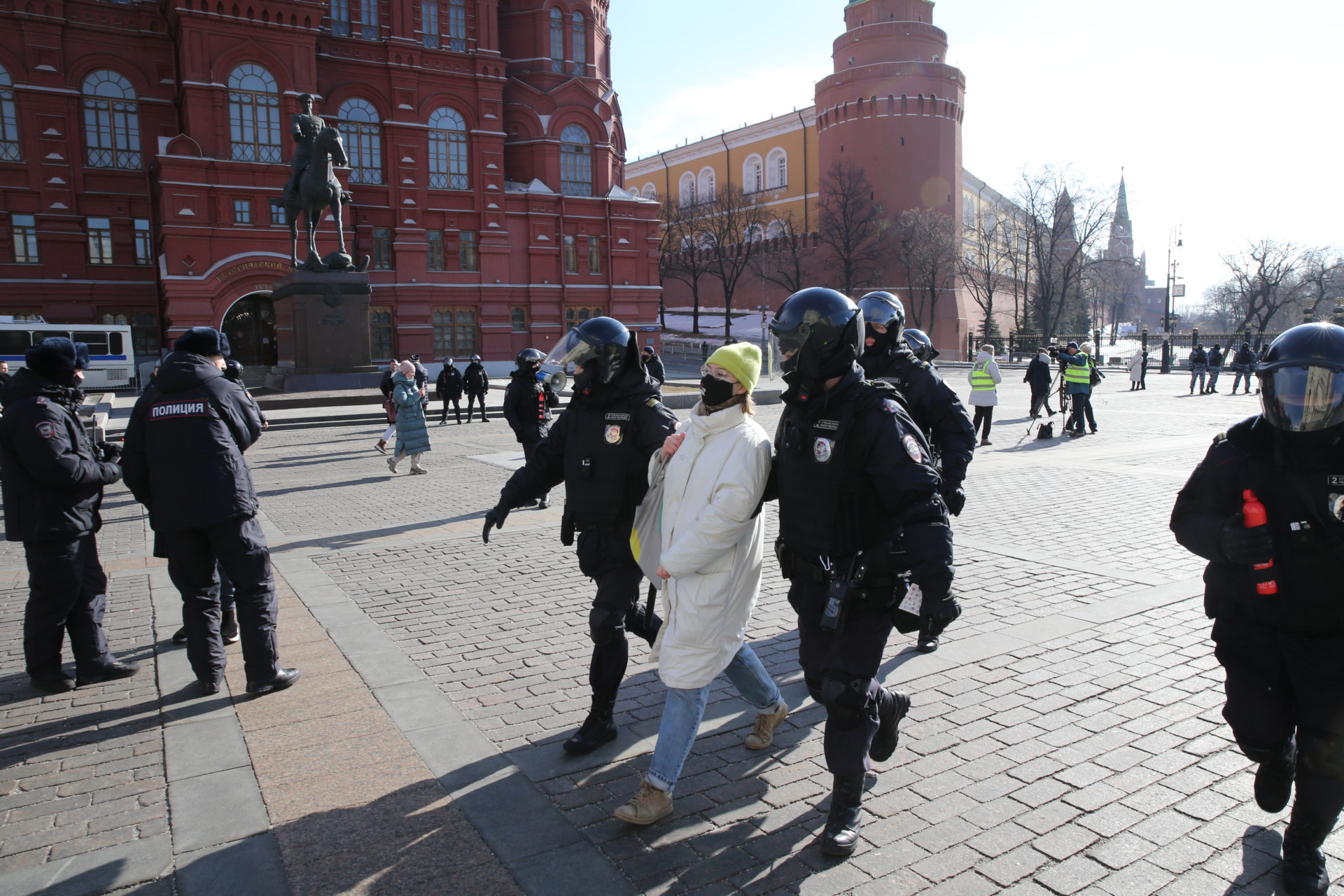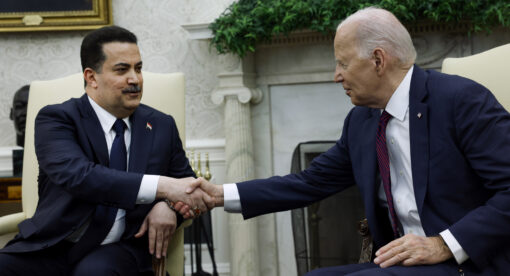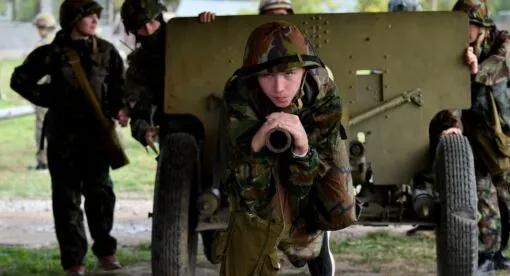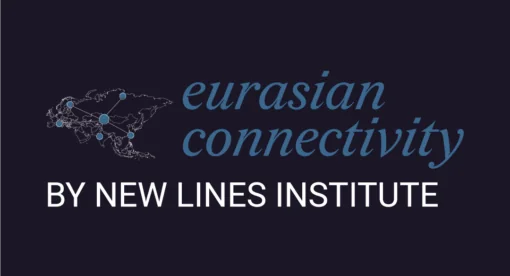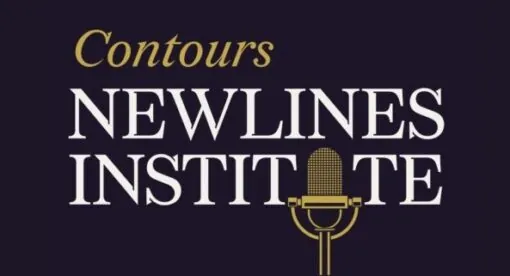Listen to article
In the last two years, much attention has been paid to political protest and unrest in Russia. From widespread national protests against Alexei Navalny’s incarceration in 2021 to short-lived demonstrations against the Russian invasion of Ukraine, observers have been focused on the capacity for opposition forces to contest public space in large cities. Much less attention is paid to labor unrest. President Vladimir Putin’s regime ignores the potential for labor-related and socio-economic protest at its peril, but even with a more active coercive policy domestically, the problems of Russia’s political economy could be disruptive in the coming years. From a state resilience perspective, this is paramount because the regime will not want to have to “snuff out” labor strikes across the country, which could have a cascade effect.
The Russian government faces several internal challenges, including worker militancy and passive resistance to the state offered by the growth of the informal and underground economy. Pocketbook issues have a significant potential to trigger medium-term social strife, especially among the working poor in Russia’s small and medium-sized cities who comprise many tens of millions of potential victims of the economic fallout of Putin’s foreign policy adventure.
Worker Militancy: A Forgotten Risk
After the turbulent transition to a market economy 30 years ago, where workers – notably coal miners – engaged in political strikes, the Russian government was able to maintain the illusion of social peace thanks to rising living standards and a draconian new labor law. Since then, economic crises have provoked worker unrest, notably in 1998 when coal miners crippled rail transport.
Even in the period of economic growth under Putin, significant strike activity occurred after 2006 over wages and conditions. As the country’s GDP grew, so did societal expectations. As Greene and Robertson surveyed back in 2010, no industries were immune – not even the well-placed and profitable oil and gas sectors. While Putin had some success employing the rhetoric of social paternalism, the growing inequality and a consciousness of the relative hollowness of corporate and state social responsibility led to increasing disquiet. This underlying propensity to mobilization and resistance was relatively neglected in analysis and scholarship as the attention remained on elections and elite politics. While overall deindustrialization and demographic decline blunted the force of militancy, the period from 2007 to present saw a rapid expansion of production capacity in food and consumer goods in factories owned by transnational corporations. Some of these sectors, such as auto assembly, were successfully unionized by more militant actors.
Another cycle of higher-intensity work stoppages occurred in 2015 and 2016 over unpaid wages. Since 2018, there has been a shift from industrial strife to public sector and service worker protest. Before the COVID-19 pandemic, there were also widespread environmental protests. From 2019 to 2020, there were significantly more labor protests than in previous years.
While COVID anti-crisis measures helped abate economic and other discontent, the current wartime privations faced by more vulnerable Russian workers of all sectors, together with the elite’s focus on Ukraine and bluntly coercive measures, have made regional authorities in particular vulnerable to internal strife. In the past, the problem for dissatisfied employees was leadership, organization, and connecting their grievances to others – in other words, they were unable to coalesce their protests. Now, despite the ever more visible security apparatus of the Russian state today and more draconian laws, the evidence of the last 10 years shows no hesitation on the part of citizens to use novel forms of labor protest to test and circumvent anti-worker laws. Petr Bizyukov, head of labor protest monitoring organization trudprotest.org, has highlighted the recent rise in more extreme protests – including hunger strikes, as well as protesters directly addressing the authorities, often over the heads of employers and managers. This frequently results in short-term success for employees in addressing issues such as wage arrears.
Pocketbook Pressures
Soon after the Russian invasion of Ukraine, analysts pointed to strong support for military action and high approval for the government and president. While inflation shot up and famous brands left Russia, sudden and sharp economic pain for the majority was avoided. Indeed, as of June, the home front still sees a kind of “phony war” characterized by avoidance and magical thinking. Most Russians know the economy faces severe tests, but apart from initially rising prices, it is hard for the average consumer to gauge. This is reflected in a sharp drop in those reporting a willingness to protest since mid-March. However, state actions merely delayed the effects of sanctions and war on living standards; pocketbook pressures are likely to return in just a few months.
Initial shows of support for the war and the Russian regime mask the irresistible power of inflation and falling wages. The initial inflationary burst is waning because demand has been destroyed. Once more, focus on the rich cities of Moscow and St. Petersburg alone distracts from the fact that most Russians, even before the war, were barely making ends meet. The past years saw a significant rise in the use of microcredit to fund everyday expenses with an unprecedented number of poor-quality debtors unable to service their loans without state support. Since 2021, Russian households have been paying a higher proportion of their earnings to service debt than Americans. What’s more, as Vladislav Inozemtsev observes, 16 million Russians are living below what is an already miserly poverty line, and the average Russian family spends 85% of income on food and utilities.
The currency fall and debt default of 1998 seem a long way in the past, but comparisons to that crisis are now frequently made when assessing the prospects of 2022-2023. The ruble is strong due to the collapse in imports, but the logistical problems of obtaining alternatives will not be solved by central bank actions. Indeed, a strong ruble weakens the federal budget, already in deficit in April by $5 billion. This in turn limits spending to create a social cushion. Furthermore, macroeconomic stabilization cannot prevent the massive slowdown in production, if not in oil and gas then in the big blue-collar employers like metal exporters and mining.
Russia’s middle class can cut expenses, and the very poor likely will return to the subsistence tactics of the 1990s, including growing vegetables on dacha plots. However, looking to 2023 and beyond it is hard to see how even poor Russians, used to 10 years of stagnation of incomes, will accept the need for further sacrifices in service of foreign policy aims. What is often forgotten is the flipside of the Putin-era transformation of the Soviet industrial economy: Russia is more than just oil and gas exports. Most decent jobs are in the service sector and in consumer goods production – both hit hard by the exodus of foreign firms, sanctions, and falling demand. These breadwinner jobs support millions of people in regions dependent on transnational manufacturing sites.
In the 2000s, regions with few other advantages welcomed foreign firms by setting up Special Economic Zones. Now these, like the one in Kaluga whose jobs revolved around Peugeot, VW, Volvo, and Michelin, look vulnerable – high-quality blue-collar jobs are now furloughed, with workers receiving two-thirds wages to stay at home and national auto production at 15% of the pre-war level. Unemployment currently is constrained by downward elasticity of wages – a historic “fix” in Russia – but only in the short term.
Economic geographer Natalia Zubarevich notes with alarm the potential for unrest in the coal-producing regions of Kuzbass, which would have an immediate knock-on effect on machine construction, chemicals, and metallurgy. Even in the rich center, it is indicative of the continuing unpreparedness that only 12,000 people are being retrained from the 200,000 in Moscow at risk of employment loss from the exit of Western firms. This is why federal authorities are so keen to see symbolic wins like the rebranding and reopening of McDonald’s franchises: In a low wage-economy, fast-food service jobs are stable, and there are 100,000 of them in Russia.
Even official statistics forecast a rise in official unemployment by 2 million by the end of 2022. International observers like the IMF forecast a much higher potential level – up to 9%. Some are arguing for the return of the “command economy” of Soviet times, with the state overseeing forced overemployment and some kind of “new deal,” but the problem with this hypothesis is the relative weakness of the state in regulating domestic capital in a meaningful sense. After all, one of the meanings of Putinism was the division of the dollar-export economy into fiefdoms to the neglect of productivity and effective corporate governance. There are too many conflicting interests preventing even a reinvigorated technocratic-authoritarian leadership from addressing typical long-term issues of delayed transformation from a middle-income and highly corrupt petro-economy.
Passive Resistance and the Limits of Russian State Capacity
Woeful state capacity and lack of coherence – now laid bare by the performance of the armed forces in Ukraine – have dogged the state’s ability to meet basic expectations, such as trash collection and basic medical care. This relates not only to large-scale infrastructure and energy projects, where Russia has a very poor record, but also to just the provision of basic services, safety, and economic security. While inroads were made on digitizing various citizen services, outside big cities, access to quality medical care, timely bureaucratic decision-making, and even basic services like well-maintained regional highways and predictable garbage collection is poor at best. Many Russians live with a sense of deep and abiding disappointment and even bitterness, believing that they had left the “bad days” behind in the 1990s. Weaknesses in state effectiveness are matched by an appetite, noticeably increased since 2018, for raising indirect taxes and fees on the population.
People are responding by resorting to similar tactics as those tried in prior periods of crisis: escape to subsistence activities and the black economy. Since 2018, deteriorating quality of life and state provision in health and education were Russians’ top concerns. At the same time, the increase in value-added tax from 18% to 20% in 2018 and high prices for gasoline and utilities meant nearly one in two Russians reported in 2019 they had no way of planning for the future, let alone any unforeseen expenses in their daily lives.
One result is the normalization of precarious and informalized work, with nearly 40 million Russians – half the working-age population – avoiding even income tax on at least part of their wages and 9 million self-employed paying little direct tax at all as day- and seasonal laborers, taxi drivers, construction workers, and other typical black economy jobs. This should not be thought of as merely avoidance; it is a direct result of the poor performance of the state, not only in ensuring compliance but also in creating a meaningful social contract.
The Potential for Negative Politicization
Leaving aside economic circumstances, evidence of active support for the military campaign remains contradictory. 130 days of conflict is not enough time for the myriad effects to be felt, and the economic cannot be disaggregated from the political, the social, and the personal. The long-term economic effects of the war eventually will impact Russia’s working class in many ways:
- The necessity to take a lower-status, much-lower-paid job
- Anxieties about the continuing deterioration of schools and hospitals as more money is pumped into the military
- Continuing irritation with the disruption of the consumer economy and rising prices
- Disbelief at the inability of the state to regulate gasoline prices
- Stories from friends and relatives of the massive casualties among Russian service personnel
- Humiliation ensuing from returning to the kitchen garden plot to grow vegetables
- Rising social tension as some sectors are highlighted for support while others are neglected
- The psychological burden and uncertainty that war-without-war brings just on its own
All these factors could lead to negative politicization of the war by the broader population. While there is no way of predicting widespread social strife in Russia, the potential for rising negative political sentiment is clear, especially given an aging and ineffective regime. U.S. policymakers should watch for high-level political interventions in labor-conflict – such as by Putin himself, and the spread of wage-arrears disputes to the politically sensitive weapons sector of the economy, as well as metallurgy and coal.
Jeremy Morris is Professor of Russian and Global Studies at Aarhus University, Denmark. He is the author of Everyday Postsocialism (Springer 2016).
The views expressed in this article are those of the author and not an official policy or position of the New Lines Institute.

